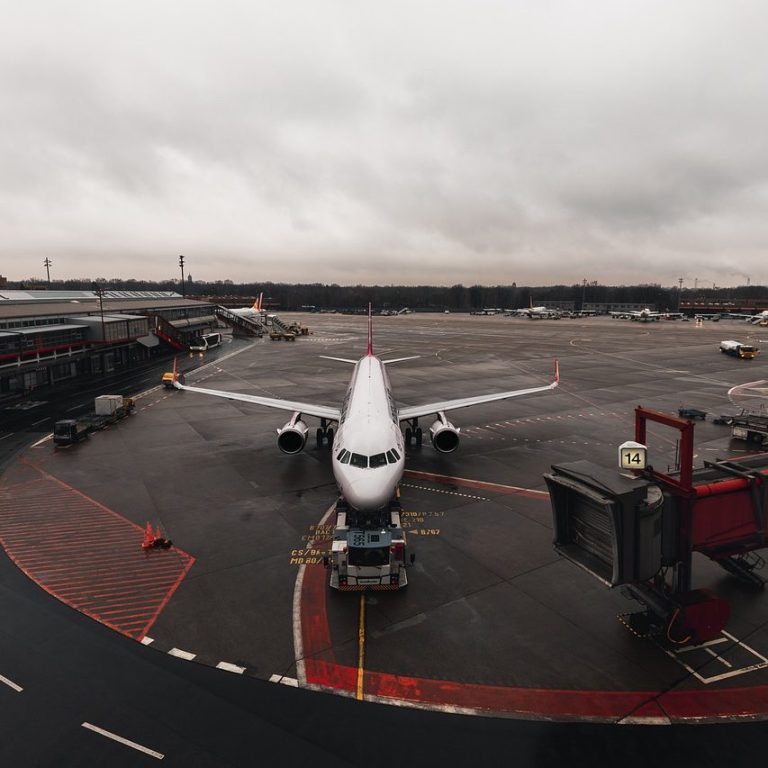How AI is Transforming Airport Operations & Reducing Carbon Emissions
The aviation industry plays a crucial role in global connectivity but is also a significant contributor to carbon emissions. With increasing pressure to reduce environmental impact, artificial intelligence (AI) is emerging as a game-changer in optimizing airport operations and reducing CO₂ emissions. AI-driven data solutions are enabling smarter decision-making, improving efficiency, and cutting unnecessary fuel consumption.

Aircraft taxiing and waiting times:
Excess fuel consumption occurs when aircraft wait for takeoff or taxi inefficiently.
Ground vehicle movements:
Fuel-powered service vehicles contribute to emissions when operating inefficiently.
Flight scheduling inefficiencies
Poor coordination between arrivals and departures leads to excessive fuel burn and operational waste.
Case Study: AI-Optimized Ground Handling at HAM
At a major European airport (HAM), AI-based optimization was implemented for ground vehicle routing and aircraft taxiing.
These outcomes demonstrate how AI-driven decision-making enhances both environmental sustainability and operational efficiency.
20%
reduction in ground vehicle emissions
15%
decrease in aircraft taxiing time
90%
Improved turnaround time, leading to lower fuel costs and better scheduling efficiency
AI-Powered Solutions to Reduce Emissions
AI is transforming how airports and airlines manage these challenges by leveraging real-time data, machine learning, and predictive analytics. Here are some key ways AI is reducing carbon emissions in airport operations:
1. Optimizing Aircraft Taxiing & Pushback Operations
AI-driven systems analyze live traffic conditions to recommend optimized taxi routes and pushback slots. This minimizes fuel wastage from unnecessary waiting times. For example, solutions like Aerdrya's Pushback Slot Service use real-time data to prevent congestion, reducing CO₂ emissions per flight.
2. Enhancing Flight Scheduling Efficiency
AI-powered flight scheduling solutions help reduce delays and improve gate assignments, leading to better fuel efficiency. By predicting optimal runway availability and streamlining arrivals and departures, AI minimizes the idle time that aircraft spend burning fuel on the ground.
3. Smart Ground Vehicle Management
Ground vehicles, such as baggage trucks and fueling vehicles, contribute to emissions when operating inefficiently. AI-based GHO Distances (“Ants”) solutions optimize vehicle movement routes, reducing unnecessary travel and fuel usage. By clustering service requests and minimizing vehicle miles, airports can significantly cut their operational emissions.
4. Energy Management in Airport Facilities
AI-driven energy management systems monitor real-time energy consumption across airport terminals and facilities. By automatically adjusting lighting, HVAC systems, and energy usage based on demand, AI reduces overall energy waste and carbon footprint.

Autonomous electric ground vehicles that further reduce fuel consumption

AI-driven contrail management to minimize the climate impact of aircraft exhaust trails

Advanced air traffic control (ATC) AI solutions that optimize airspace management for lower emissions

Conclusion
AI is revolutionizing airport operations, providing data-driven solutions to reduce inefficiencies, optimize fuel consumption, and cut carbon emissions. With continued advancements in AI-powered analytics, airports can meet sustainability goals while maintaining operational excellence.
Investing in AI technology is no longer an option but a necessity for the aviation industry to align with global sustainability objectives. As more airports adopt AI-driven strategies, the future of air travel will become both greener and more efficient.
